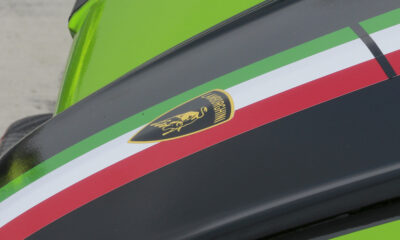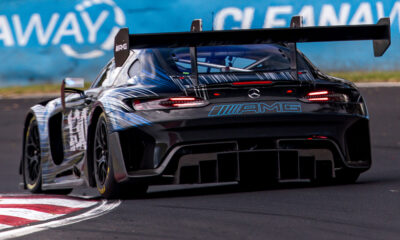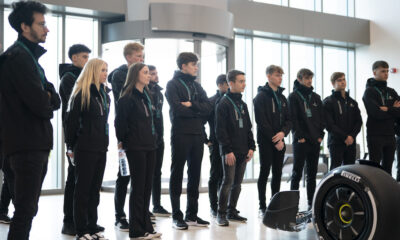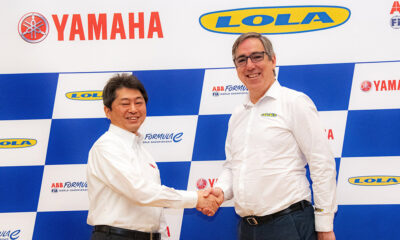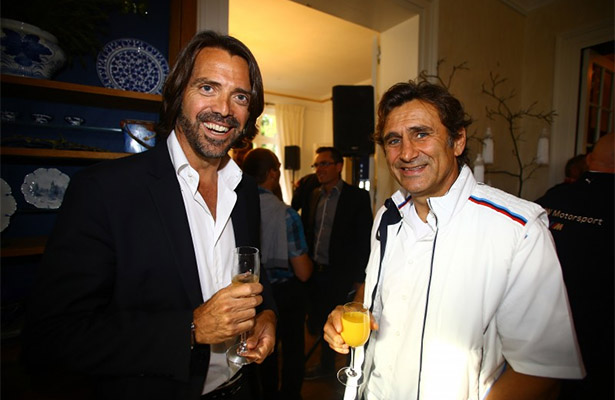
Photo: Vision Sport Agency/SRO
He invented the GT1 and GT3 platforms, was a moving force behind the Pro-Am class structure and Balance of Performance and helped revive GT racing at a time when not many people believed in it.
It’s impossible to list all of Stephane Ratel’s achievements in a single sentence, as the founder of the SRO Motorsports Group has been one of the most influential people in the sports car racing world.
In the last two decades, Ratel has reinvented modern-day GT racing, with the launch of numerous successful championships, including the Blancpain Endurance Series, which holds its premier event, the Total 24 Hours of Spa, this weekend.
Following yesterday’s first part, enjoy the second and final part of “Behind the Title” with Stephane Ratel.
The 24 Hours of Le Mans was already in sight?
“The first [Venturi] race held on the Bugatti Circuit at Le Mans had an impressive grid of 55 cars. The problem is that I launched the new international series without filling any applications for authorization from the FFSA or FIA, as I had no idea of the sporting structure of a world I did not know.
“I was therefore required to renounce the pan-European schedule and refocus only for France, surprisingly without suffering too much [repercussions] despite there being drivers from 20 countries. All of them looked forward to discovering the great European circuits the following season.
“In 1993, we reached up to 67 cars at Paul Ricard and almost 60 [in support] of the 24 Hours of Le Mans. There was only two of us that managed everything. We slept only a few hours each night during the race weekends but it was a phenomenal success.
“The ACO was surprised by this success, especially since our first event took place, by coincidence, the weekend following the 24 Hours of Le Mans in 1992, which had seen one of the most meager grids in the history of the race with only 20 cars. I then said to the ACO, ‘If you want Le Mans to become Le Mans again, then we must bring GT cars back.’
“During the 92-93 offseason, I talked to Alain Bertaut, who managed the ACO’s new GT technical regulations and tried to convince Venturi to build a car, which was not too difficult as a lot of people had good knowledge of the 24 Hours.
“Unfortunately the F1 program stopped overnight because it cost too much money and the entire sport found itself on the hot seat with a new shareholder representative sent to straighten out the company’s accounts. I really thought it was all over but I managed to convince him to continue the Trophy.
“As a result, there was no question of going to Le Mans unless I was able to finance the development of the program [myself]. I had managed to sell a collector car to finance the construction of the development car and then sell four Le Mans cars to recover my investment.
“Venturi managed to build the prototype of the LM500 in time for the awards ceremony of the 1992 season and we had sold seven cars that evening. The financial challenge was a success, the return on investment doubled thanks to the sale of an eighth car the following year.
“Everyone said it was impossible to run seven cars in the 24 Hours of Le Mans, especially with a model that was barely out of development, led by a 29-year-old who had never set foot in the 24 Hours. They took me for a fool!”
Except it was possible…
“Le Mans 1993 as a true media [circus] because of the presence of Christophe Dechavanne. He was a television star and made the cover of Tele 7 Jours and Paris Match. All of the French press was interested and came to support their star. He even had a bodyguard, which was amazing!
“Five of the seven Venturis finished the race, and with the exception of Christophe’s car, which was associated with Jacques Laffite, who had an independent team, Jacadi Racing Team Venturi dealt directly from the others, bringing drivers and budgets.
“The success of the race posed a problem. What do we do with the cars after Le Mans? Where can they race? I had the idea of organizing an end-of-year race for the seven Venturi LM, and inviting other GTs like Ferrari F40s and Porsche 911 3.8 RSRs to join them.
“Someone spoke to Patrick Peter who was immediately taken by the idea. He already had the desire to recreate the 1000km of Paris but with modern cars.
“Together, the first GT race was organized and marked the starting point for the revival of the class. History was made with Michel Neugarten winning in a Ferrari F40.
“Enthused by this first experience, Christian Haberthur called Jurgen Barth, Porsche’s director of customer competition, who jumped on the first plane to meet us. An appointment was made the next day for lunch at Club 55 in St. Tropez.
“After the meal, the Barth-Peter-Rate association was born and the BPR series launched.”
Then came the Lamborghini championship…
“Having left Venturi at the end of the 1994 season to look after BPR and team RFR Sport, which was running a Ferrari F40 LM in BPR and at the 24 Hours of Le Mans, I had kept hearing from customers wanting to find themselves in a one-make series with powerful and prestigious cars.
“After an unsuccessful attempt with BMW and the M3, Gerard Larousse, with whom I had kept in good contact from the Venturi Larousse F1 adventure, took me to Lamborghini.
“The Diablo SVR was released in 1996 and 32 cars were sold for the new “Lamborghini Supertrophy.” No one had dared to do such a thing with cars equipped with V12 engines. It’s as if the Lamborghini Aventador of today was used in Super Trofeo!
“The grid was so impressive that we were invited to race around the world. Kyalami, Laguna Seca, and we were even paid to have the series show up in Melbourne at the opening round of Formula One.”
You must have very good memories of that time?
“Absolutely. To finish the 24 Hours of Le Mans as a driver and team manager is one of them. The return of GT cars to Le Mans is also very satisfying.
“More recently, there’s been the FIA GT Championship and races in San Luis, Argentina and the first race of the GT1 World Championship in Abu Dhabi with an extraordinary GT1 grid, which gathered six manufacturers, each with two teams of two cars.
“Nobody believed it, but we got to start the championship and make it live for two years with the sensational GT1s.
“During the difficult economic environment, the ACO and FIA create the FIA WEC, and the GT1 World Championship [suffered], despite the continuation of GT3 models in 2012.
“In the end, it was a financial disaster which put SRO on the edge of bankruptcy but it was a great human and sporting adventure I’m proud of through numerous contacts made around the world.”
We tend to forget there was a fairly close relationship with the ACO…
“My relations have always been quite complicated but I’ve always been very cordial with the ACO. I contributed to the return of GT at Le Mans.
“In 1995, 80 percent of the field consisted of BPR teams. I was responsible for organizing the two European rounds of the ALMS with Don Panoz and directly contributed to the launch of the [European] Le Mans Series, which I was a shareholder with Martin Birrane, Patrick Peter, Don Panoz and the ACO in 2004, until its evolution of the Intercontinental Le Mans Cup in 2011.
Do you have any regrets?
“The death of Martin Bartek. This is the drama of my professional life. His loss was very tough. It as someone who had boundless passion.”


















